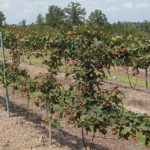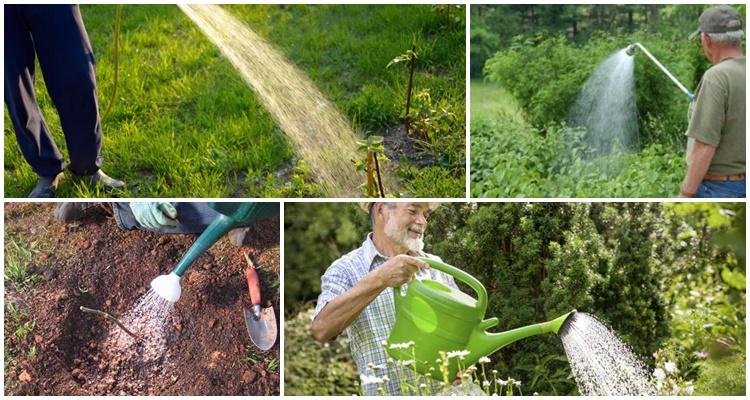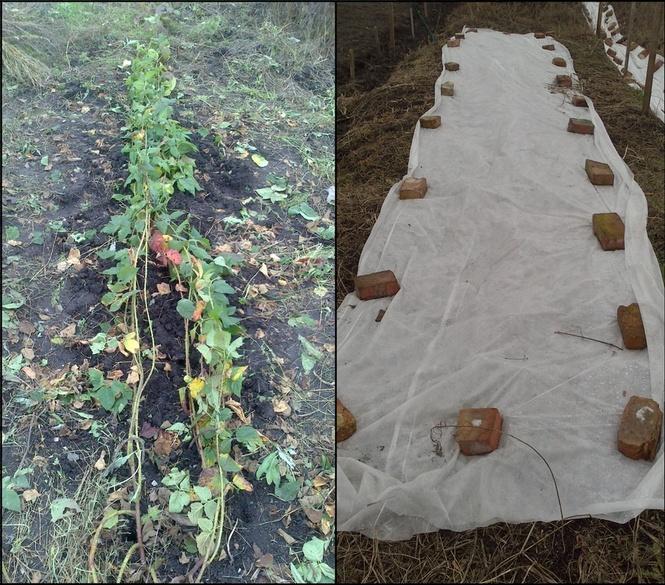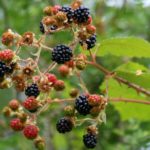Himalaya blackberries are considered one of the most popular crops. It is distinguished by early ripening and has a minimum of thorns. With adequate care, the plant gives a good harvest. The crop is characterized by fairly large fruits. To grow a plant successfully, it needs to be provided with quality care. It should include timely watering and fertilization.
History of selection
This blackberry originates from Northern Iran and Armenia.Today it has spread throughout the world. Gardeners grow the crop to produce tasty and large fruits.
Botanical description and characteristics of blackberries
Himalayan blackberry is a subshrub that belongs to the Rosaceae family. It reaches 1-1.5 meters in height. This variety is considered very early and has high yield. It is characterized by large fruits.
The crop is characterized by a long period of fruit ripening. Therefore, harvesting is required several times. The variety has large berries that are distinguished by their regular oval shape, black tint and glossy structure. The fruits are characterized by a sweet and sour taste and a pleasant aroma. In culinary and medical practice, not only the fruits, but also the foliage of the crop are used. If agrotechnical recommendations are followed, yield parameters reach 8 kilograms.
Pros and cons of the Himalaya variety
The key disadvantage of the plant is its demands on soil composition. It is possible to get a good harvest only on fertile, light soil that has good drainage.
How to plant a crop
To get a good harvest, it is important to plant the plant correctly. In the south it is recommended to do this in the fall.It is recommended to complete all work a month before frost. In the north, planting should be done in the spring, when the soil warms up.
Blackberries must be planted in a well-lit place that is protected from the wind. The culture needs fertile soil that has good drainage and moderate humidity. The variety tolerates shade and periodic floods.
To plant a crop, do the following:
- Clear the area of weeds.
- Dig a hole measuring 40x40x40 centimeters.
- Add 5-6 kilograms of rotted manure, 40-50 grams of potassium fertilizers and 100-150 grams of superphosphate into the hole. Thoroughly mix fertilizers with soil.
- Place the seedling in the hole, deepening it to the level of the root collar.
- Water the soil with 5 liters of water and cover with a mulch layer 6-8 centimeters thick.
- Finally, install trellises at least 2 meters high.
Care instructions
In order for blackberries to grow and develop normally, they need to be provided with complete and high-quality care.
Watering
The culture is resistant to drought. This is due to developed roots that go deep and branched shoots. They form a shadow near the roots. It is important to avoid drying out the soil.
The frequency of watering is adjusted depending on the weather. In the first 1.5-2 months after planting, blackberries need to be watered every week. This is then done during flowering and fruit ripening.
Fertilizer and feeding
The culture needs a whole complex of minerals. In this case, nitrogen-based products should be applied in the spring, and phosphorus and potassium preparations should be applied in the fall. 2-3 years after planting it is worth using the following means:
- 7 kilograms of humus;
- 40 grams of saltpeter;
- 100 grams of superphosphate;
- 30 grams of potassium-based products.
How to prepare bushes for winter
In the middle zone and in the north, bushes need to be insulated. For this, it is permissible to use spruce branches. To cover the plant, it is recommended to bend its young shoots to the surface of the ground and cover them with coniferous branches. It is also permissible to use other covering material. You should sprinkle the bushes with snow on top.
Disease and pest control
Blackberries of this variety are characterized by strong immunity to fungi and parasites. However, untimely harvesting increases the risk of developing gray rot. The drug “Horus” will help to cope with the pathology. It is worth treating the bushes before the buds appear, at the end of flowering and after ripening. Overripe fruits often attract ants. “Medvetox” and “Grom-2” help to cope with insects. Sometimes blackberries suffer from attacks by mole crickets and cockchafers. To prevent damage, it is recommended to plant marigolds and calendula near the bushes.
To avoid the development of fungal pathologies, it is worth using copper-based products. They are used in spring and autumn.
Reproduction
Blackberries can be propagated in the following ways:
- Green cuttings. Annual shoots measuring 15 centimeters in size are suitable for propagation. They should include 2-3 buds. They should be placed in water and wait for the buds to germinate. After 2 weeks, the fragment with roots should be separated and planted in a pot with soil.
- By layering. For this method, branches should be rooted from the end of July to the end of August. In this case, the shoots need to be sprinkled with moist soil. There is no need to separate them from the main crop.
Harvesting and storage
This blackberry variety is characterized by an extended fruiting period. Therefore, harvesting is required several times.In this case, it is recommended to remove the berries with stalks and put them in wooden boxes.
Harvesting should only be done in the morning. This must be done in clear weather. During periods of precipitation, blackberries become watery and do not store well. Berries can be kept in the refrigerator for 4 days. If you want to preserve the fruits for a long time, they should be dried or frozen.
Himalaya blackberry is a popular garden plant that produces high yields. For crop cultivation to be successful, it is important to strictly follow agrotechnical recommendations.























